Toum (Lebanese Garlic Sauce)
By Lee Jackson ↣ Published on: October 1, 2021
Lebanese Toum sauce is the essence of garlic! Fluffy, whipped garlic is magically combined with oil and salt to create something so special I can barely find words for it… Intensely flavourful and an essential for any Lebanese or Mediterranean dinner table.
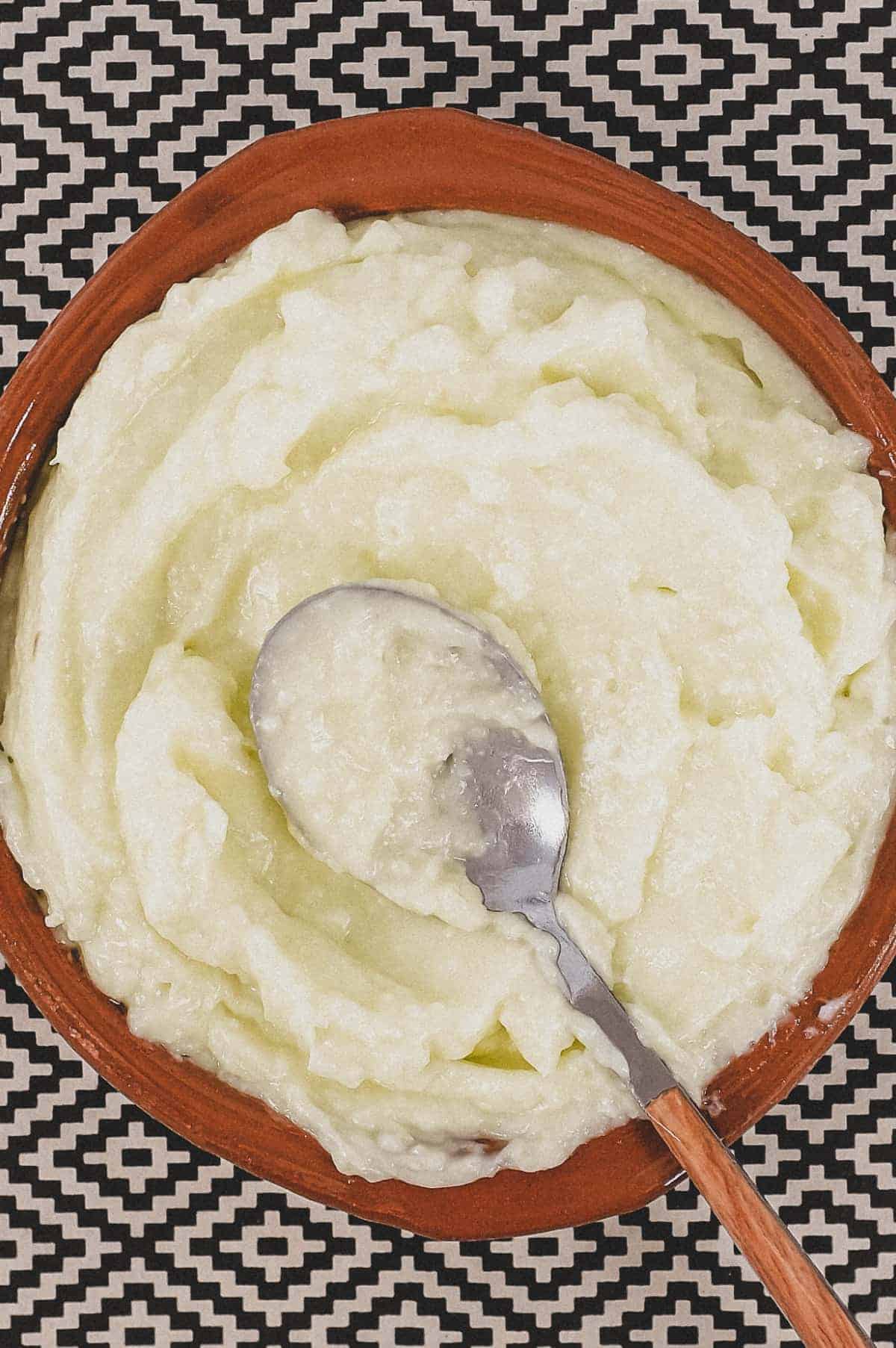
Few things in life give me more joy than Lebanese Toum sauce. More garlicky than garlic itself it is an intensely flavourful and magical condiment. A little goes a long way with this humble, yet deceptively tricky dish, but once you know how, you'll never want to be without it.
When enjoying traditional Lebanese cuisine, Toum is never far away and served alongside many dishes, especially grilled meats and poultry or as a dip for vegetables and bread. But what is this magical, pungent little condiment? Well, it's pretty much just garlic and oil that's been whipped together to form a smooth, creamy emulsification. It's a complete revelation in flavour and a triumph when paired with grilled meats like my juicy and spiced Chicken Kebabs or Lebanese Lamb Kebabs.
It's a big flavour, very garlic, sharp and tangy with a sour citrus freshness from lemon. As ingredients go, it's very minimal - it's all about technique here and getting the emulsification going, which can be a little challenging. Patience and caution pay off when creating toum, and once you've mastered the technique, there'll be no stopping you.
What's Ahead?
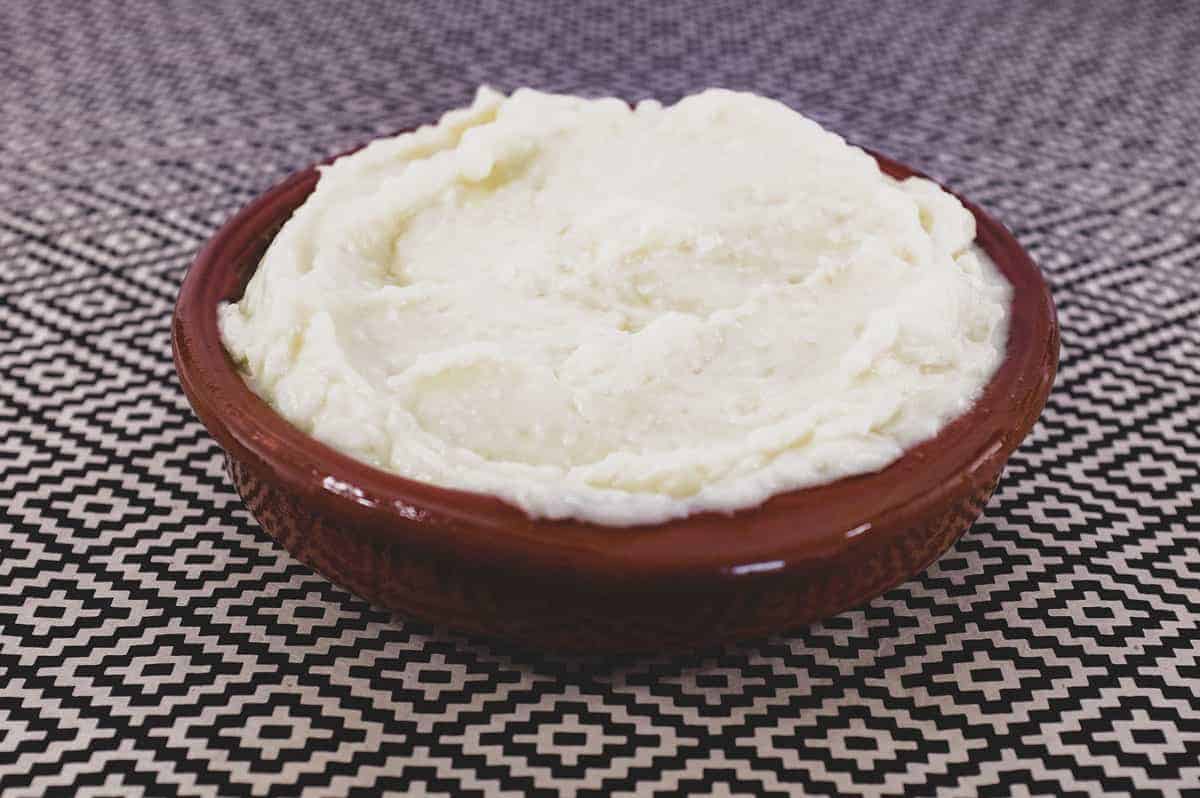
What is Toum? (صلصة ثوم)
Toum is a creamy, garlic-infused condiment originating from Lebanon. Made with crushed garlic, lemon juice, salt, and olive oil, it boasts a strong garlic flavour and a fluffy texture. Often served with grilled meats or as a dip, it adds a zesty kick to dishes.
The history of Toum traces back to Lebanon, where it has been a staple condiment for centuries. Its exact origins are somewhat unclear, but it is believed to have been developed in the Lebanese mountain regions. Toum likely evolved from traditional garlic sauces found in Middle Eastern cuisine, with its recipe refined over generations. Traditionally made using a mortar and pestle, Toum's popularity spread beyond Lebanon, becoming a beloved condiment in various Middle Eastern cuisines. It continues to be cherished for its bold garlic flavour and versatility in enhancing dishes.
Lebanese Toum is somewhat similar to other garlic-based sauces found in Mediterranean and Middle Eastern cuisines, such as aioli or aoli in Mediterranean cuisine and skordalia in Greek cuisine. However, the unique preparation of Toum sets it apart as uniquely Lebanese.
Why it works?
It's a flavour you'll remember and crave! - This sauce is something I think about all the time. Whenever I'm planning a Middle Eastern style dinner, I'll make a batch. I'll then be guaranteed delicious garlic toum for the weeks to follow!
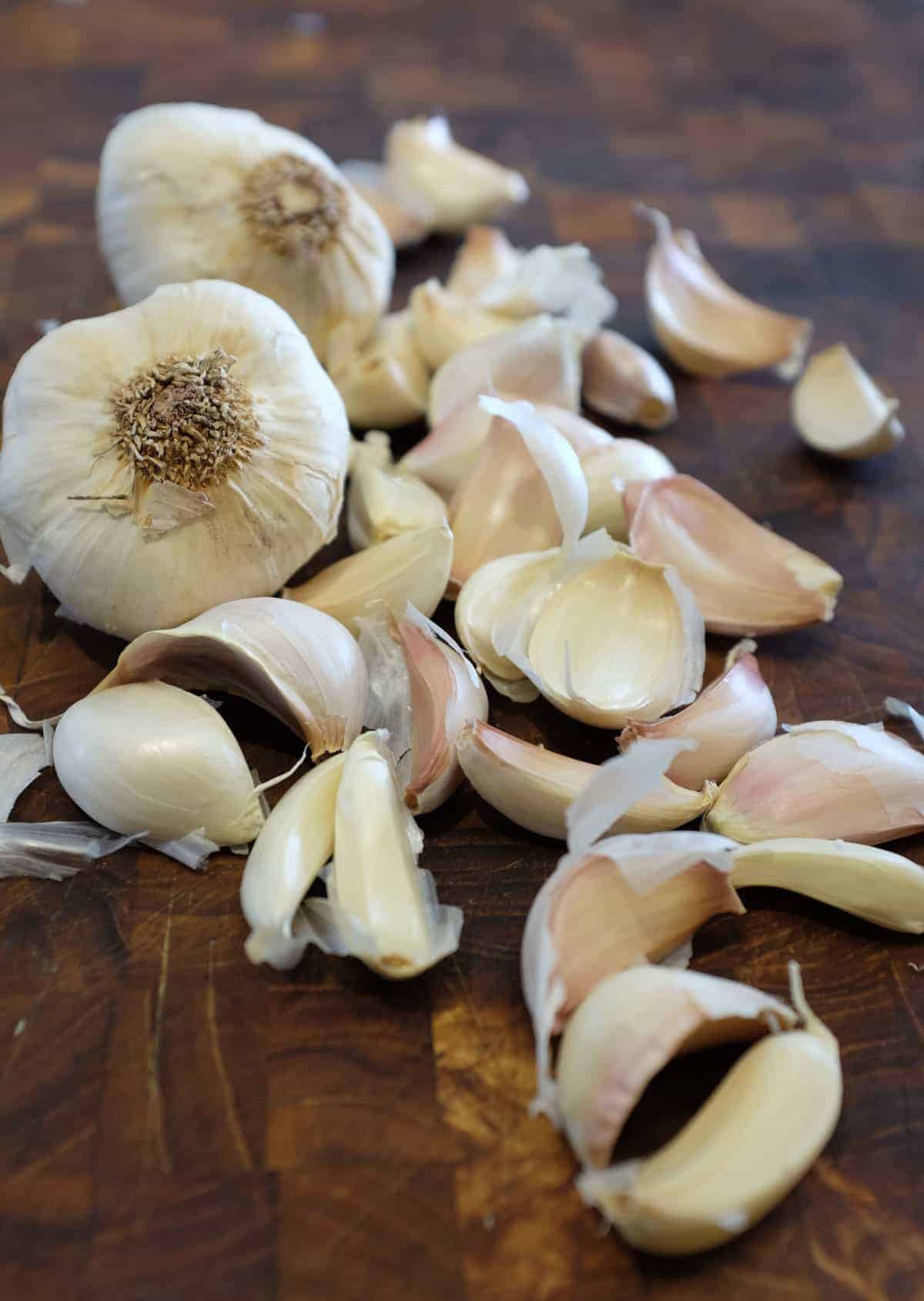
Stuff You'll Need
The roll-call of ingredients is few! This little treasure only calls on five simple ingredients.
- Garlic - undoubtedly the star of the show. Garlic is essential and let me stress - good quality garlic. Buy the most expensive, freshest you can find. Cheap garlic will affect the flavour and NEVER use pre-peeled or jarred garlic. It WILL produce rancid flavour, don't do it!
- Salt - the grains of salt help create a smooth texture - I'll often use kosher or malden sea salt which helps with this process further.
- Oil - I use a combination of grapeseed and extra virgin olive oil. The grapeseed is mild so let's the garlic stand out, the extra-virgin olive oil brings a little of its own flavour. Use all olive oil and it will become too much about that and not the garlic.
- Lemon juice - the fresh citrus tangy notes to toum are brought by the juice of a lemon. It takes away a lot of the astringency of pure garlic and leaves us with a fresh flavour.
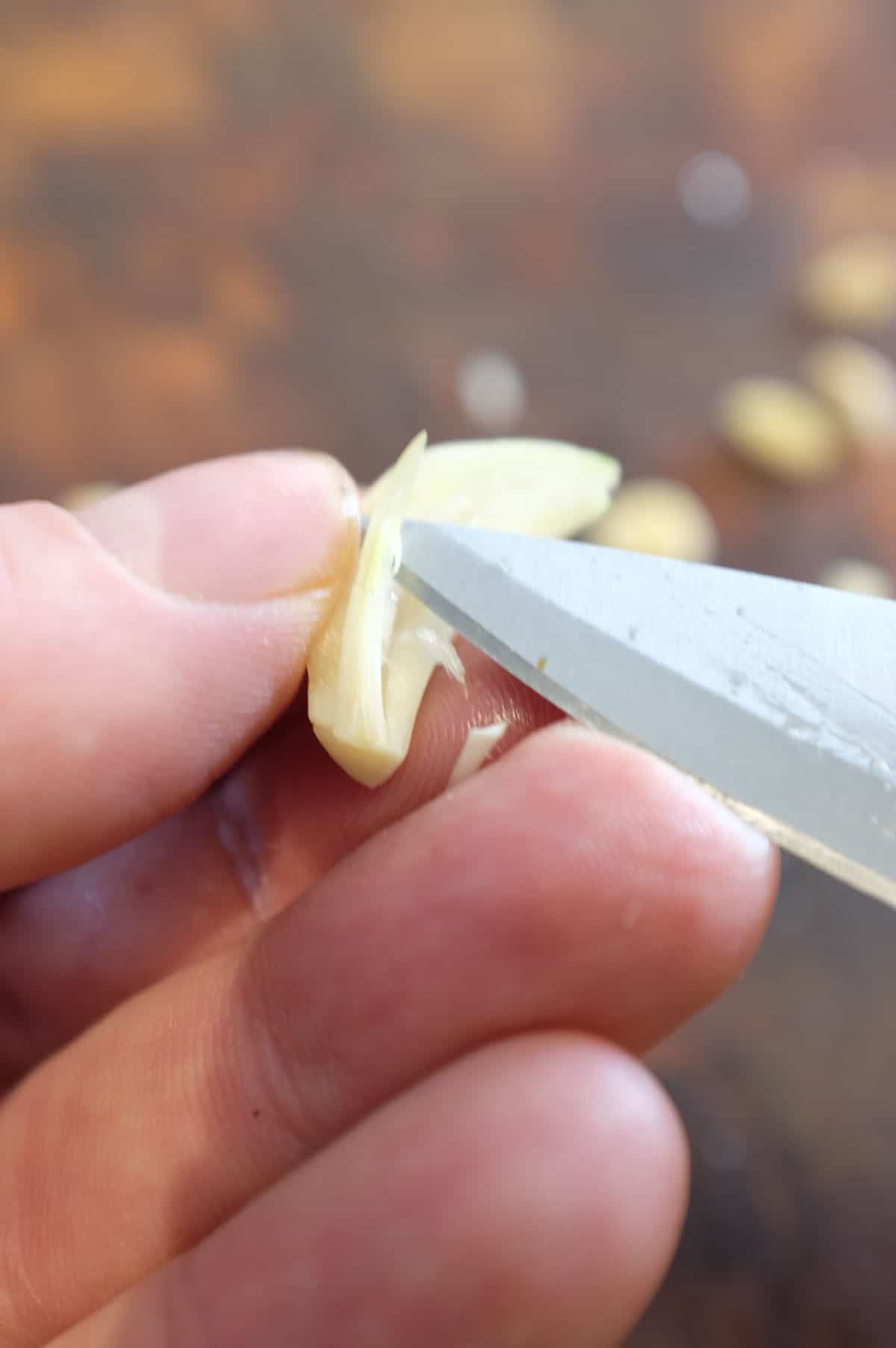
Step by Step
Making Toum is not completely straightforward and you do need a little patience to get it going properly. As with mayonnaise, the premise of toum is that the oil emulsifies with the garlic paste. Add the oil too quickly and the toum will split and unlike mayonnaise, toum is VERY difficult to salvage once this happens. Follow these steps and pay close attention to the texture and you'll be fine!
I use a food processor to make my toum, making it by pestle & mortar is time consuming and even more precarious!
- Step 1 - Peel the garlic and remove the centre 'sprout or germ' of each clove with a small knife. This part has a bitter flavour and can spoil the overall flavour of the sauce.
- Step 2 - Add the garlic and salt to a food processor and pulse blend it until it's smooth. You'll need to constantly push the garlic back into the processor from the sides using a spatula. Keep with it until it's fully chopped and becoming smooth.
- Step 3 - very gradually, with the motor running drizzle the grapeseed oil into the garlic in a fine stream, again, stopping to push anything that gathers on the side with a spatula. If you add the oil slowly enough, the toum will eventually begin to emulsify.
- Step 4 - Squeeze in the lemon juice and pulse to mix in.
- Step 5 - Drizzle in the olive oil in the same way as the grapeseed oil the sauce will begin to create a smooth white and fluffy texture. This can take between 5-10 minutes..
- Step 6 - Decant to a bowl and serve. You can cover and refrigerate for up to 2 weeks.

Pro Tips
- Fresh garlic - I must stress that using cheap or poor quality garlic really does affect the flavour. Look out for very firm and fresh garlic and buy the best quality. It makes the world of difference.
- Slow and steady - take your time and be careful not to add the oil too quickly.
- Discolouring the toum - using mild coloured oils will create the whitest colour to the toum. If you use dark, pungent olive oil it will affect the colour and flavour, so lighter oils are recommended.
- Use a small food processor. It makes it easier to puree the garlic. A smoothise style blender or immersion blender doesn’t work for toum in my experience.

Serving Suggestions
Toum is a very versatile condiments and can be served in a multitude of ways. Here are a few delicious suggestions:
- Spread on grilled meats or shawarma.
- Serve as a condiment to fish or seafood
- Dip with fresh veggies.
- Pair with falafel.
- Spread on warm pita or flatbreads.
- Add to sandwiches or wraps.
- Serve with grilled or roasted veggies.
- Mix into salad dressings.
- Use as a marinade for chicken or fish.
- Stir into cooked grains like rice, bulgur or quinoa.
- Enjoy with other small Mediterranean-style mezze platters.
Storage
- Fridge - If stored in an airtight container, toum will stay fresh in the fridge for up to three weeks. To prolong it's life by a few more weeks, flatten the toum out and drizzle a thin layer of oil over the top to stop any oxygen from reaching the sauce, then seal in an airtight container.
- Freezer - it is possible to freeze toum (in small airtight containers.), but the texture will change once defrosted - it may become grainy or watery, so it's for this reason I don't recommend, but it's not impossible if you MUST!

Ready to get cooking?
Hopefully you can see all the wonderful benefits of making your own garlic toum at home?! A little hard work now will ensure weeks of this delicious sauce at your disposal for whatever takes your fancy. Toum is a flavour revelation and possibly my favourite condiment from the Med - I'm pretty confident you'll agree when you make your own. Hope you enjoy!

More Lebanese and Mediterranean recipes
If you liked toum (you will!), I'm sure you'll love some more of my Lebanese and Mediterranean recipes too.
- Anchovy Sauce
- Zhoug (Spicy Cilantro Sauce)
- Roast Duck with Zaatar
- Manakish with Za’atar & Steak
- Middle Eastern Marinade for Chicken Kebabs
- Middle Eastern Lamb Kebabs
- Cypriot Sheftalia
- Lebanese Lamb Marinade
- Hummus Bi Arnabeet - Hummus with Roasted Cauliflower
- Moroccan Carrot Salad
- Grilled Lamb with Za'atar & Onion
- Eggplant with Tomato Sauce & Pine Nuts
- Chicken Pilaf
- Pilpelchuma with Sweet Potatoes
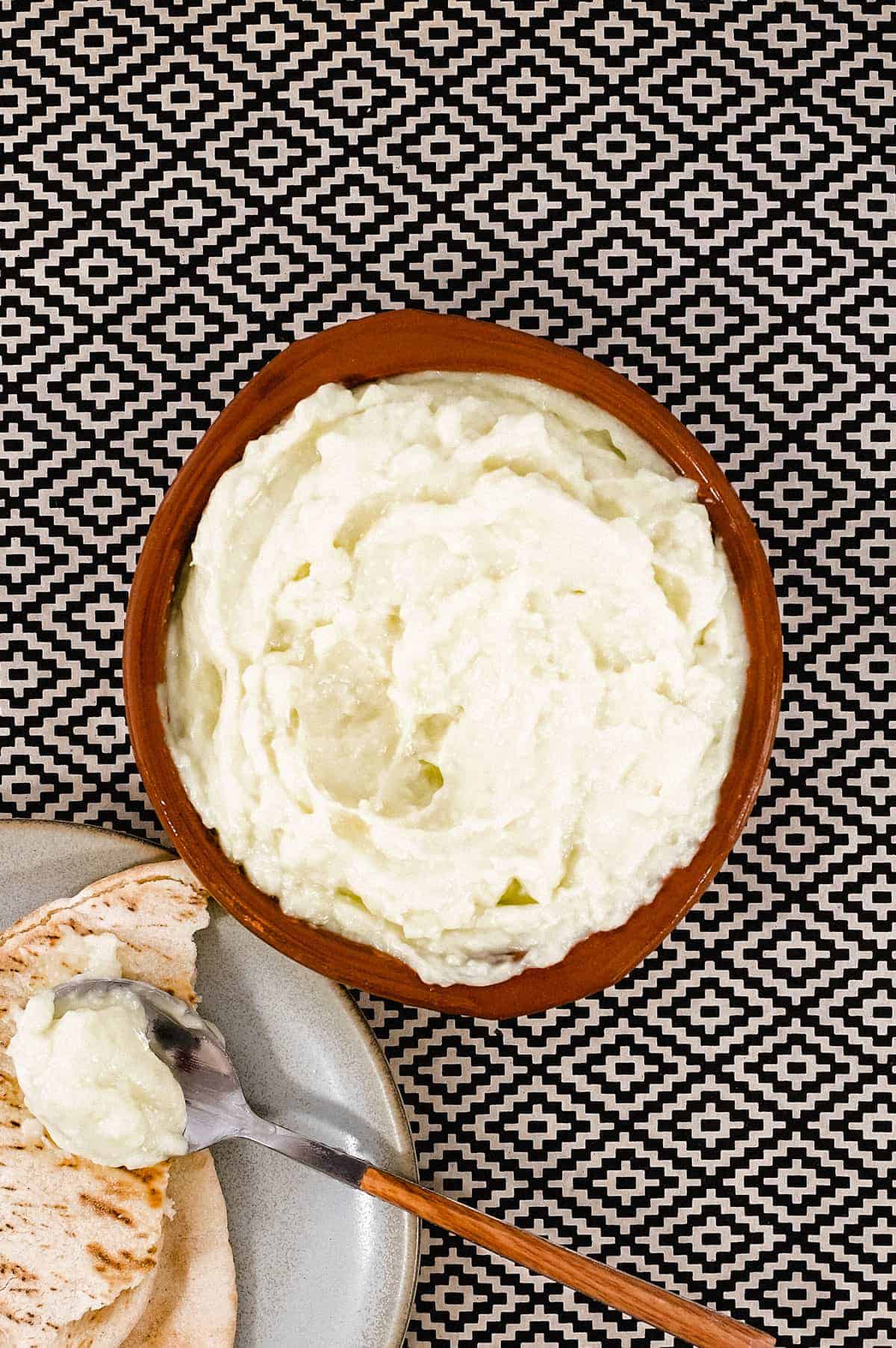
Any Questions? (FAQ)
Have a question about Toum? Let me know in the comments.
Garlic, lemon juice, salt, olive oil.
Toum, a Lebanese sauce, is garlic-based, while Italian Aioli and the Spanish Alioli typically contains egg, although not always.
Toum complements grilled meats, falafel, vegetables, and sandwiches, enhancing their flavours with its zesty garlic profile.
How do you pronounce Toum?
Toum is pronounced "TOOM"
This recipe uses affiliations and may receive a commission based on your activity (link clicks). Learn more.
Ingredients
- 2 bulbs garlic (peeled, halved lengthways and centre 'germ' removed).
- 2 tsp Kosher salt (or Maldon salt) (or 1 tsp table salt)
- 1 lemon (juice of)
- 2 cups grapeseed oil
- 1 cup extra virgin olive oil
Instructions
- Split up the garlic and peel the cloves and cut off the woody end.
- Using a small paring knife, split each clove or garlic in half, lengthways and remove the ‘germ’ from the centre. The germ is a small shoot inside. It sometimes appears a little green, but generally not so just look in the centre and lever it out with the tip of the knife (see picture above for details).
- Once you’ve removed all the germs, discard and place the garlic into a food processor along with the salt.
- Blend the garlic until it forms a paste, you’ll need to use a spatula once or twice to scrape the garlic from the sides. When it’s smooth you can begin to very slowly drizzle in about 1/4 cup of the oil with the motor still running.
- The garlic will start to emulsify and take on a creamier appearance. After 1/4 cup of oil, with the motor still running, squeeze in the juice of 1/2 the lemon and then a slow stream of of oil (about 1/2 cup).
- It’s important to take this stage slowly to help create a stable emulsification. If you add oil too quickly, it will split and may not be salvageable.
- With the motor still running, you can now begin to gradually and slowly pour in the rest of the oil. After about half has been added, add the second half of the lemon juice and then the remaining oil. The toum should now be a fluffy, creamy texture and white in appearance.
- The oil you use will affect the colour slightly, so if your oil is green or yellow, you may not have a completely white colour, which is fine!
Notes
Serving Suggestions
- Spread it on grilled meats, such as kebabs or shawarma, for a burst of garlic flavour.
- Use it as a dip for fresh vegetables like cucumber, carrots, and bell peppers.
- Serve alongside falafel as a flavourful dipping sauce.
- Spread it on warm pita bread or flatbreads for a simple yet tasty snack.
- Incorporate it into sandwiches or wraps for an extra punch of garlic goodness.
- Pair it with grilled or roasted vegetables for a vibrant and flavourful side dish.
- Mix it into salad dressings for a creamy garlic twist.
- Use it as a marinade for chicken, fish, or vegetables before grilling or roasting.
- Stir it into cooked grains like rice or quinoa for added flavour and creaminess.
- Enjoy it as a condiment alongside Middle Eastern mezze platters, complementing dishes like hummus, tabbouleh, and baba ganoush.
Storage:
- Refrigerator: Store Toum in an airtight container; it stays fresh for up to three weeks. To extend shelf life, flatten Toum, add a thin oil layer, and seal tightly.
- Freezer: While possible to freeze in small airtight containers, texture may change upon thawing, becoming grainy or watery. It's not recommended but feasible if necessary.
Nutrition
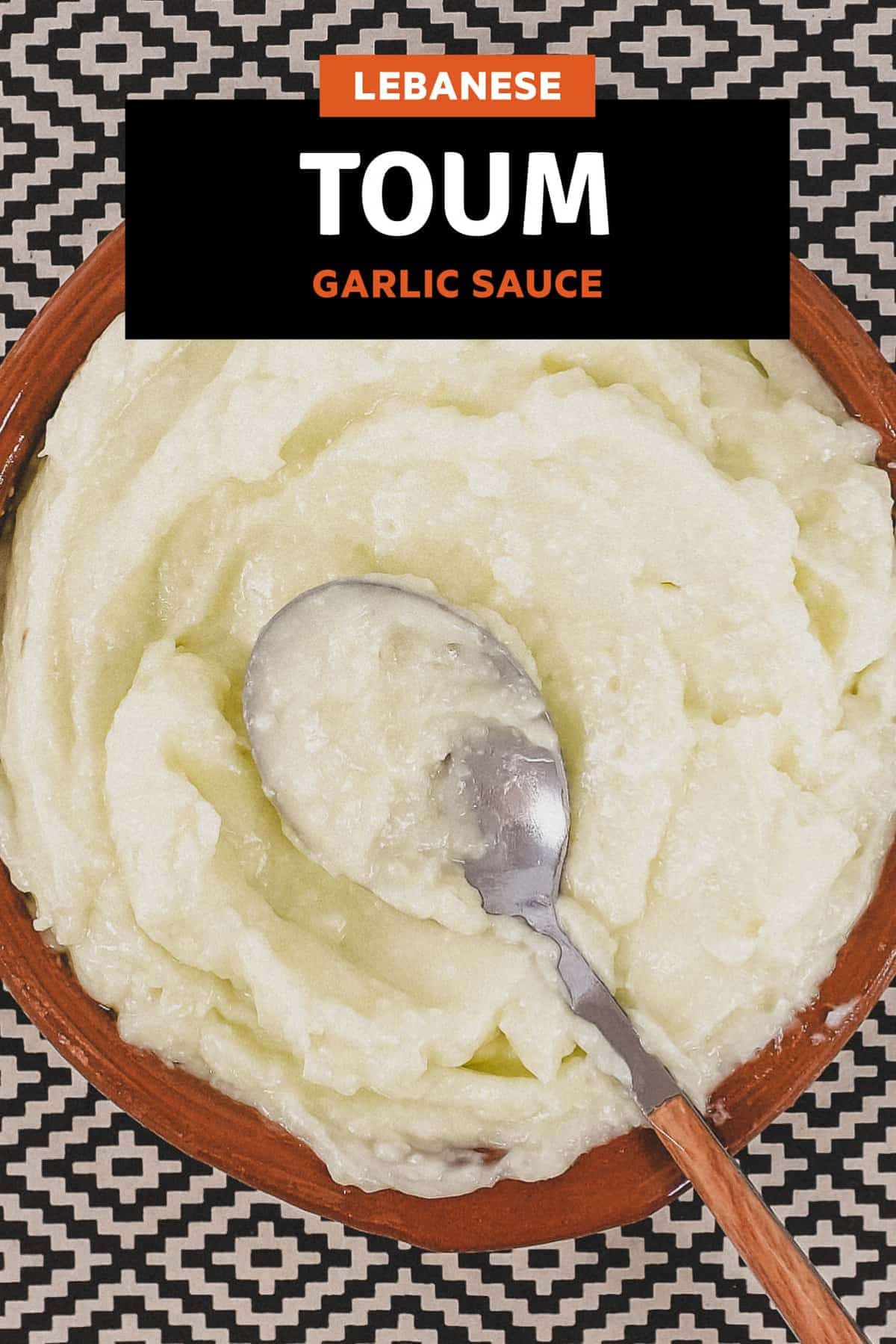
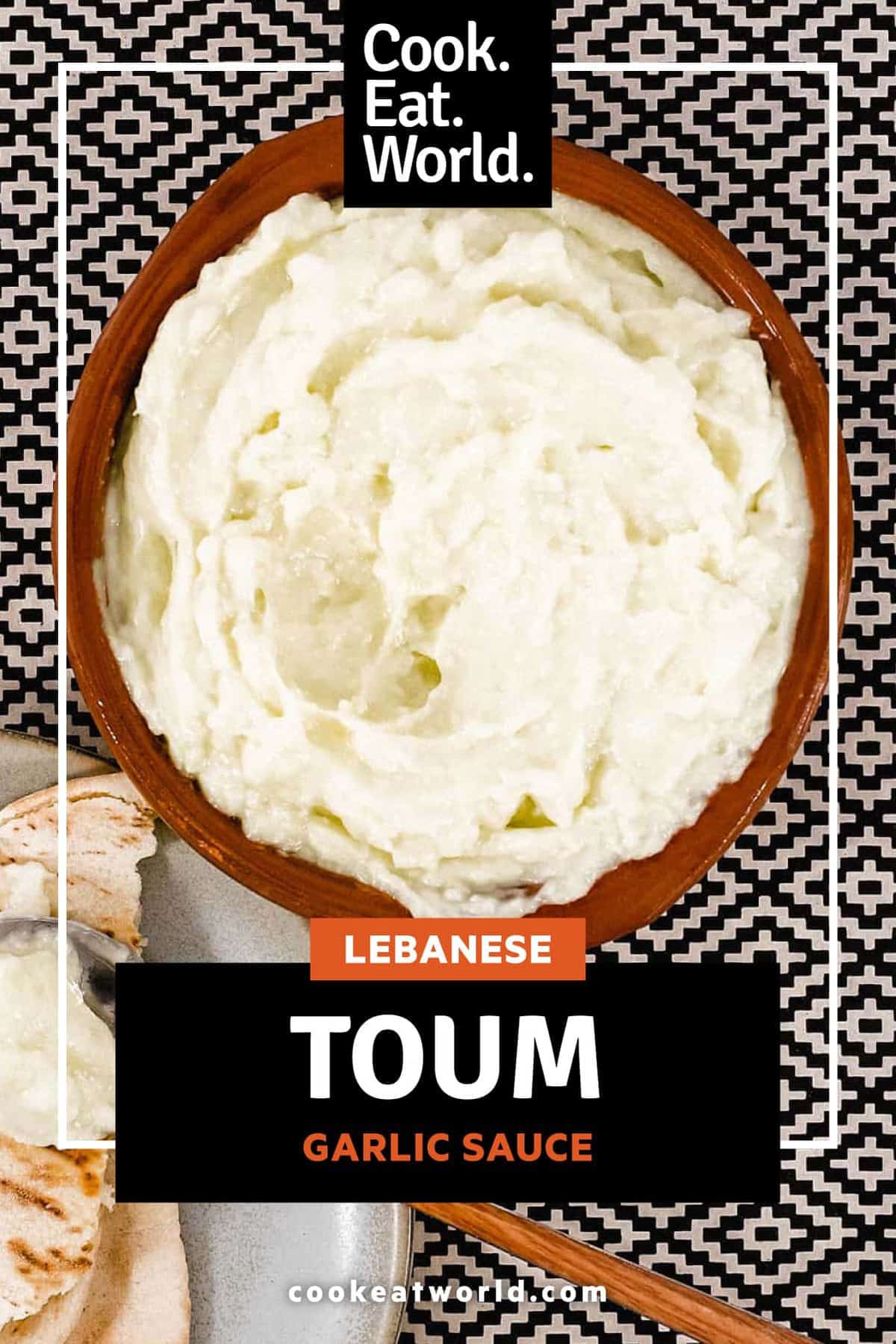
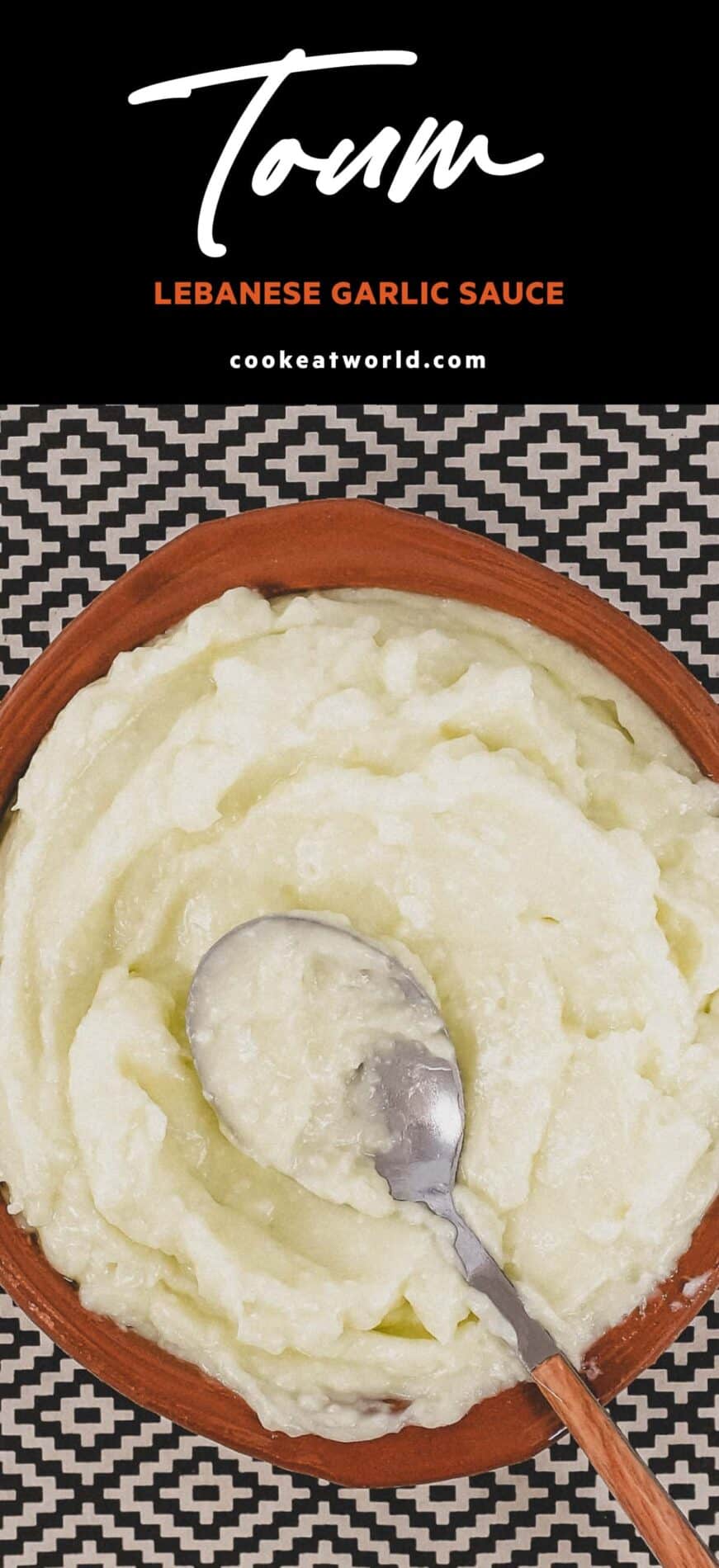
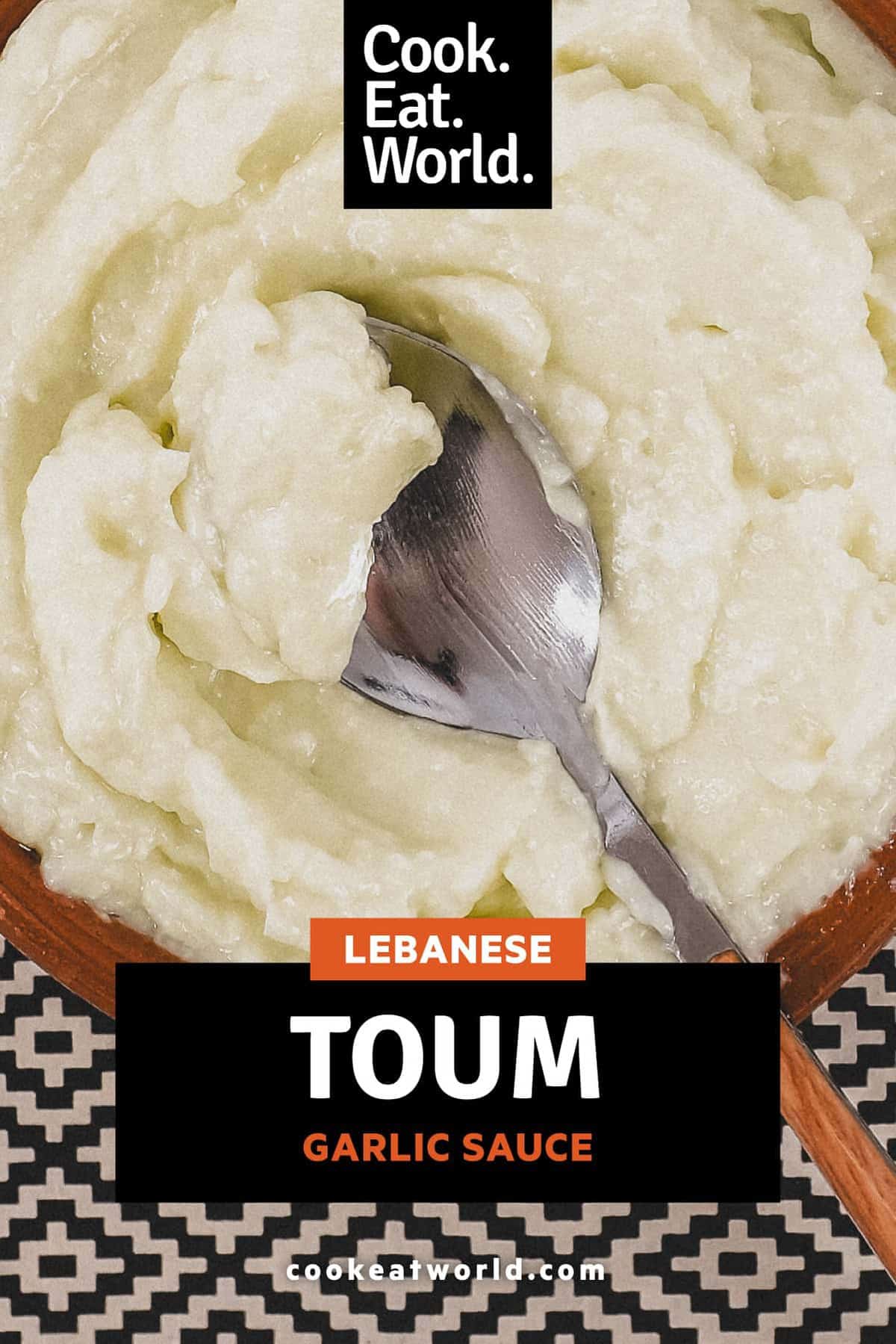

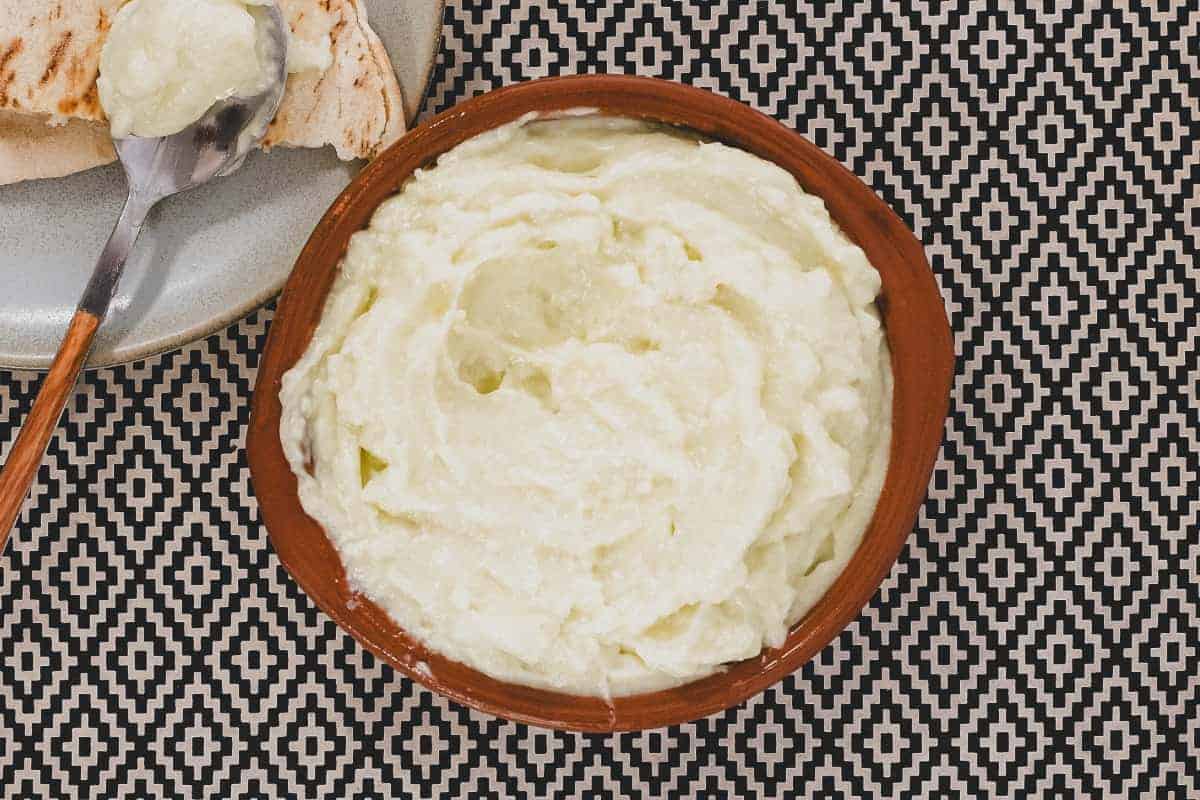
Leave A Comment